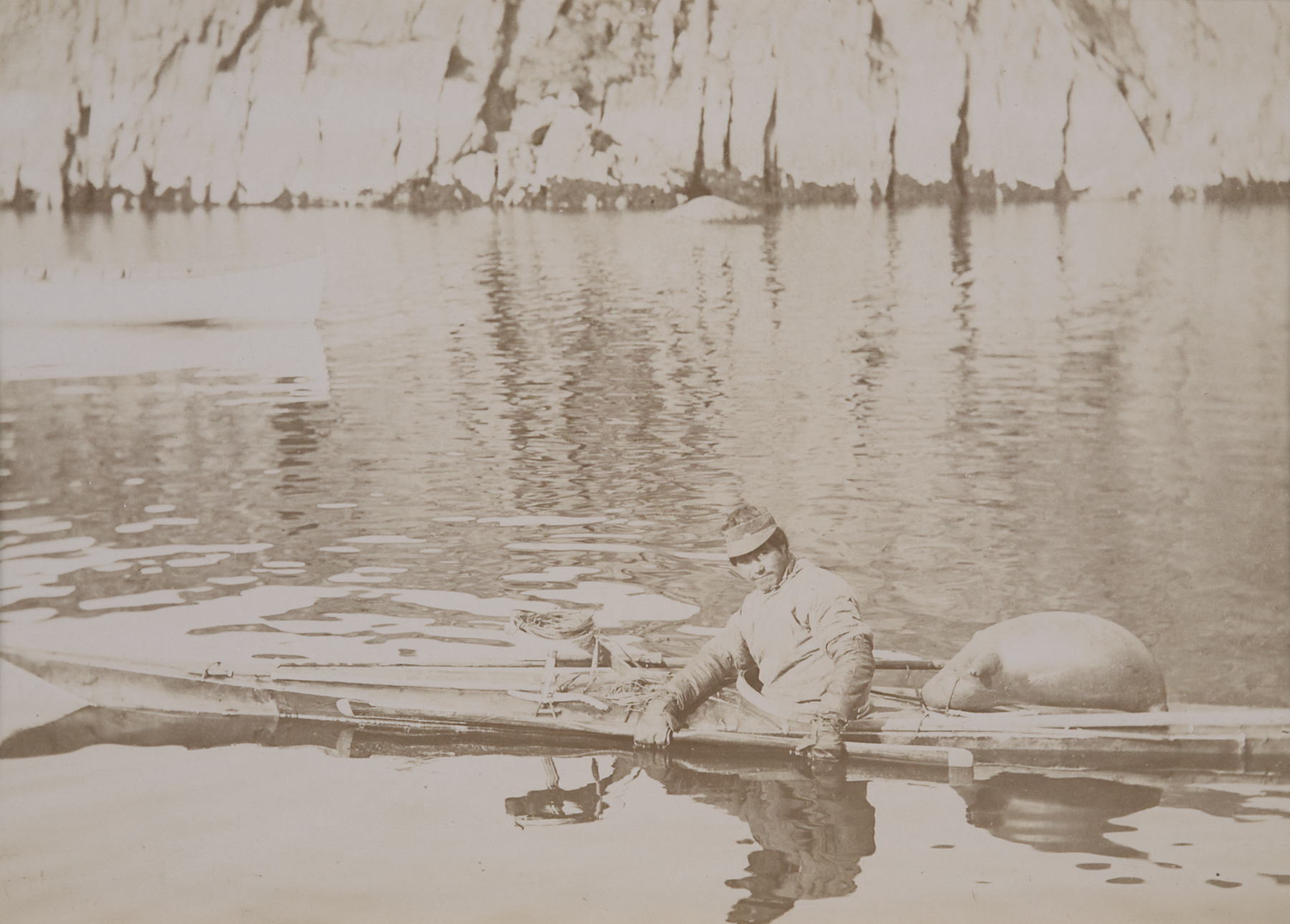Inuit man in a kayak, Lewis Lindsay Dyche
Artwork Overview
Lewis Lindsay Dyche, artist
1857–1915
Inuit man in a kayak,
1894–1895
Where object was made: West Greenland, Greenland
Material/technique: albumen print; board
Dimensions:
Image Dimensions Height/Width (Height x Width): 10.6 x 16 cm
Sheet/Paper Dimensions (Height x Width): 13.2 x 21.5 cm
Image Dimensions Height/Width (Height x Width): 10.6 x 16 cm
Sheet/Paper Dimensions (Height x Width): 13.2 x 21.5 cm
Credit line: Gift of Lewis Lindsay Dyche
Accession number: 2007.0578
On display: Long Ellis Gallery
If you wish to reproduce this image, please submit an image request



